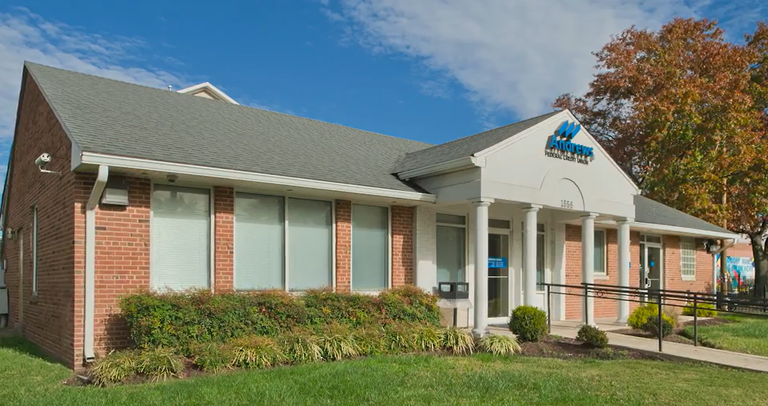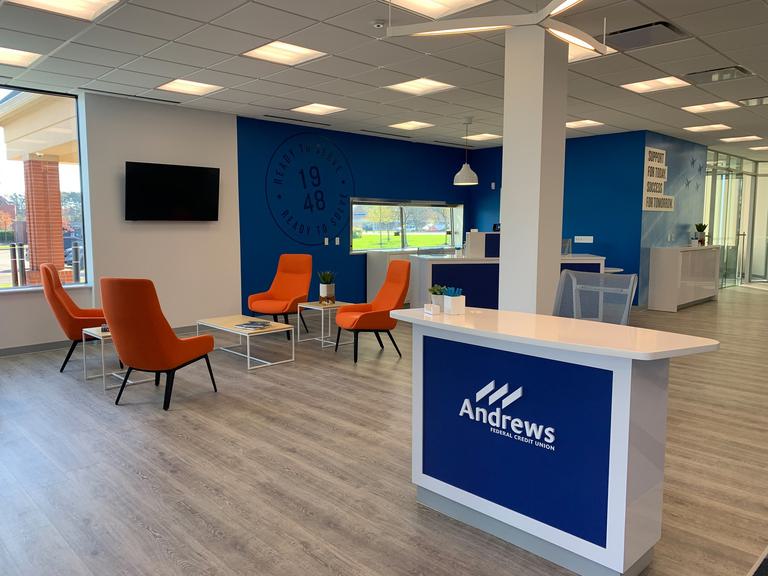Andrews Federal Credit Union
Harnesses the power of automation outside the core


The Credit Union just celebrated 75 years of service—an achievement that reflects their unwavering commitment to serve members of the military and their families by providing high-quality financial products with a passion for service, safety, and soundness.
Challenge
In 2019, Andrews Federal Credit Union took a major step in their automation journey and outsourced their core to Jack Henry Symitar EASE. That’s when the Credit Union’s IT Systems Analyst, Damien Burgess, was introduced to the power of OpCon.
“When we moved to EASE in 2019, Jack Henry recommended OpCon to us, so we could eliminate the manual processes that we were doing and push [the Credit Union] forward,” Damien says.
While they were in the process of migrating their core, the Credit Union initially provided EASE with all their OpCon jobs that were impacted by Episys, meaning any jobs for which they needed to run a batch job or pull files. That’s when they started using the OpCon EASE connector, which connects the Credit Union’s OpCon server to EASE’s OpCon server.
“At that time, we still wanted EASE to perform most of those job tasks, but then, about three or four months later, we reconvened and decided to use the EASE connector more,” Burgess recounts. “It started with one job, which was successful, and that success led to the creation of more jobs.”
Journey
The Credit Union was excited to operate with an outsourced core, but they wanted more control. “Specifically, we wanted to have more control over troubleshooting and the timeframe in which issues are resolved,” Burgess explains. “Having the EASE connector gives us that control. Now, we troubleshoot faster and resolve issues more quickly. Before we started using the EASE connector, we’d have to open a ticket with EASE when there was an issue with a job, and the SLA was two hours. By using the OpCon EASE connector, we cut that time in half.”
“In fact, we liked using the EASE connector so much that we bought more licenses for our backup center, going from only 40 to an unlimited amount,” Burgess shares. “Now, we’re able to run as many jobs in our backup center as we need, which is tremendous. Since we have branches stateside and overseas, this upgrade allows us to operate as efficiently as possible.”
The Credit Union was also able to take advantage of OpCon Self-Service, so other departments could kick off jobs without having to reach out to IT—making those departments more efficient, too.

“Self-service helps us give control back to other departments, which they love,” Burgess shared. “It allows them to become more comfortable with OpCon, too. They can see when a job starts and receive a notification when it’s complete. It’s a great tool.”
Solution
Securing adoption of OpCon by departments outside of IT didn’t come without its challenges.
“When people hear the word ‘automation,’ they often equate that in their minds to ‘I’m not needed’ or ‘I’m going to lose my job.’ We wanted to change that mindset held by departments outside of IT,” Burgess shares. “We clarified that automation doesn’t mean losing your job—it means helping you do your job more efficiently.”
The Credit Union approached this mindset shift by focusing on one department at a time. “We started with the department that had the most manual processes, so we could help them make their jobs a lot easier,” Burgess recalls. “We approached the department’s manager first and had a meeting with her. We let her know what we wanted to do and how we wanted to help her department transition their manual processes to automated ones. She was on board quickly, so our next step was to get her team on board, too.”
After she relayed her conversation with IT to her team, Burgess and his team set up a discovery call with everyone in that department. “We asked them to talk through most of their manual processes, and that allowed us to identify the low-hanging fruit—those manual processes that we could automate quickly. We picked one of those and showed them in real time how quickly and easily we could set up an OpCon job for it.”
Once that department saw how just that one automation made them more efficient, they wanted to automate more processes.
“We answered their questions about OpCon and automation honestly and remained patient,” Burgess notes. “Even after the success of those initial automated jobs, there were still some folks who weren’t on board because they were still concerned about what automation would mean for their team. We empathized with their concerns and where they came from. We let them know we understood that they were used to those manual processes—they were comfortable and familiar—but we emphasized that we were going to make their life and job better with automation.”
Burgess and his team wanted to make the Credit Union’s other departments as comfortable as possible with the transition. “We didn’t immediately get rid of all their manual processes. We started by automating certain parts of them,” Burgess explains.
“For example, a department would tell us, ‘This manual process involves three steps.’ We then said, ‘Okay, let’s just automate steps two and three; you keep step one manual for now.’ That way, we could have a better understanding of what was taking place as far as the automation was concerned, and we also gained a better understanding of what was taking place within the remaining manual aspects of the process. Eventually, we were able to fully automate those processes, just one step at a time.”
Results
As a result, staff in other departments let Burgess and his team know they were able to join certain meetings again—ones they just didn’t have the time for before OpCon. “They were able to expand the impact of their department because OpCon gave them a big-picture view of what they were doing as a department, so they could identify where they wanted to go—giving them time for more strategic work they couldn’t consider before,” Burgess celebrates. “That helps the overall business, but it also helps individual teams as well; they were able to start contributing more beyond just doing those daily manual tasks. OpCon helped them find their way in Andrews.”
When asked to picture life without OpCon, Burgess says, “I picture a lot of sleepless nights. We would need a three- to four-person team for our manual processes. We’d be running 18-hour shifts every day because so much needs to be done outside the standard 9-5 block. More work would need to be done by other departments. There would be more possibilities for errors, too. Humans make mistakes, and, in this industry, those mistakes can be very costly,” Damien explains.
“[Without OpCon], we’d also compromise our synergy. Our departments would be working in a siloed way rather than a collaborative way. OpCon has helped us bridge gaps between departments, so everyone can understand what each department does and how we can all help each other. We can be more proactive than reactive. With email notifications, we can go in right away and start troubleshooting. We don’t have to wait for a phone call. We’re already on it. That relieves both IT and other departments. They know we’re on it.”
“Put simply, life without OpCon would mean more manual processes, more needed staff, and more work in general.”
Thankfully, that’s not a reality Andrews Federal Credit Union has to experience.
What's Next?
As the Credit Union celebrates 75 years of service to their members, they’re looking forward to automation driving the next 75. “Our executive leadership is focused on and invested in automation, so we’ll be automating even more processes moving forward.”
“There are a lot of possibilities for OpCon outside the core, and we’re [going to continue] to take advantage of those. That keeps us fresh [and competitive], but it’s not just about the numbers. With automation, people can actually take a vacation, which helps morale, too. Ultimately, automation impacts your employee experience as well,” Damien explains.
“Automation enables growth, and as your automation grows, you have to want to grow with it. Any department impacted by automation gets to be involved in the process, which creates a better work environment, and we welcome that.”
More Case Studies
CREDIT UNIONS

Safe 1 Credit Union
Give staff flexibility and increase value with OpCon automation
CREDIT UNIONS

Keesler Federal Credit Union
Facilitates better member experiences and departmental independence w…
CREDIT UNIONS




